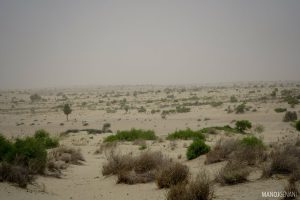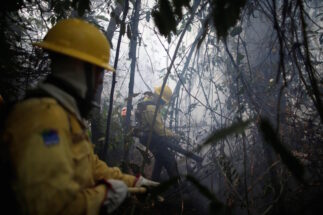Bhim Maya, a 72-year-old farmer in Hangey village in Samtse, is unconcerned about the spiralling price of cooking gas. Her small biogas plant has freed her of dependence on liquefied petroleum gas (LPG) .
She collects cow dung from her cattle shed and dumps it into a circular pit, mixing it with the required quantity of water. The gas produced as a result of the fermentation is stored in a tank through a pipe which is connected to the kitchen through control valves.
“Now we don’t have to use LPG or electricity. There is no need to. Biogas production is simple and easy,” she said with a broad grin.
For almost a year now, Bhim Maya has not refilled her LPG cylinder. Her consumption of firewood has also drastically decreased over the years. Besides the production of gas, she added that the plant also produces organic manure for the vegetable crop. “Unlike cow dung, the organic manure doesn’t produce foul smell and the vegetables grown using organic manure fetch good prices in the market too.”
![Cattle kept in rural areas provide easy fuel to feed the bio gas plants [image by: Kinley Yonten]](https://dialogue.earth/content/uploads/2020/08/88423276_430184824440156_5939156248074125312_n.jpg)
This popularity has led to obvious changes. Karma Dorji, another farmer, explained, “Earlier, we would often see people queued up to get LPG, but with people going for biogas, we do not see such a thing.”
Government initiatives
This new wave of biogas plants in Bhutan started in 2011, when the Bhutan Biogas Project (BBP) began with the objective of providing a sustainable energy source for households with livestock and help them reduce their dependence on firewood and fossil fuels.
According to Yeshey Penjor, the minister of agriculture and forests, firewood collection is one of the main concerns for farmers in rural areas. It is difficult, time consuming and risks degrading the environment. LPG, which was the other option, is imported from India, and puts a strain on the economy.
“Rural people should focus on setting up biogas and bio-methanation plants to substitute LPG, it is imperative that new and alternate mode of energy is put to use. Which country will not face LPG shortage issues?” Penjor said.
The possible savings are significant for both the state and citizens. BBP project director Dorji Gyeltshen said that according to BBP’s calculations, the annual saving by a household switching to biogas would be the equivalent of 2,000 kg of firewood, 2,555.5 litres of kerosene, 164.25 kg of LPG, and 1,460 kilowatts of electricity. Bhutan consumes about 1.2 million tons of fuelwood a year, 70% of which is used by households for cooking and heating. There are also significant savings in terms of less carbon released into the atmosphere.
According to Prakash C Ghimire, the chief technical advisor to BBP, “If the plant is constructed as per the design using quality construction materials and workmanship, technically, the plant functions for more than 25-30 years.”
BBP has already set up 2,921 biogas plants in 17 of Bhutan’s 20 districts, and is supposed to install a total of 3,630 such plants by the end of 2020.
Replacing costly LPG
According to Bhutan’s National Statistics Bureau, “The import of LPG increased from 9,299 Mt [metric tons] in 2017 to 10,002 Mt in 2018, an increase of almost 8%.” In 2018, a total of 614,658 LPG cylinders was consumed, compared with 566,667 cylinders in 2017.
The family-sized biogas units that are being rolled out in Bhutan are expected to serve four people’s energy needs, so the full rollout of the project is expected to benefit more than 15,000 people directly.
The units that have already been installed are collectively producing around 5,000 cubic metres of biogas per day (the equivalent of nearly 60,000 cylinders of LPG per year). The savings from fuel replacement was recently estimated at BNT 31.4 million (USD 419,000) per year.
Nor is the benefit only in savings. Sonam Tshering, the secretary of the Ministry of Economic Affairs, said the savings might help in combatting poverty (for those replacing fossil fuels) but could also lead to increased incomes via the potential sale of the fertiliser created by the plants). All in all, the successful implementation of the policy has led to much hope in Bhutan.
![<p>If well maintained, a fairly inexpensive biogas plant may last for 25-30 years [image: Alamy]</p>](https://dialogue.earth/content/uploads/2020/08/biogas-scaled.jpg)







